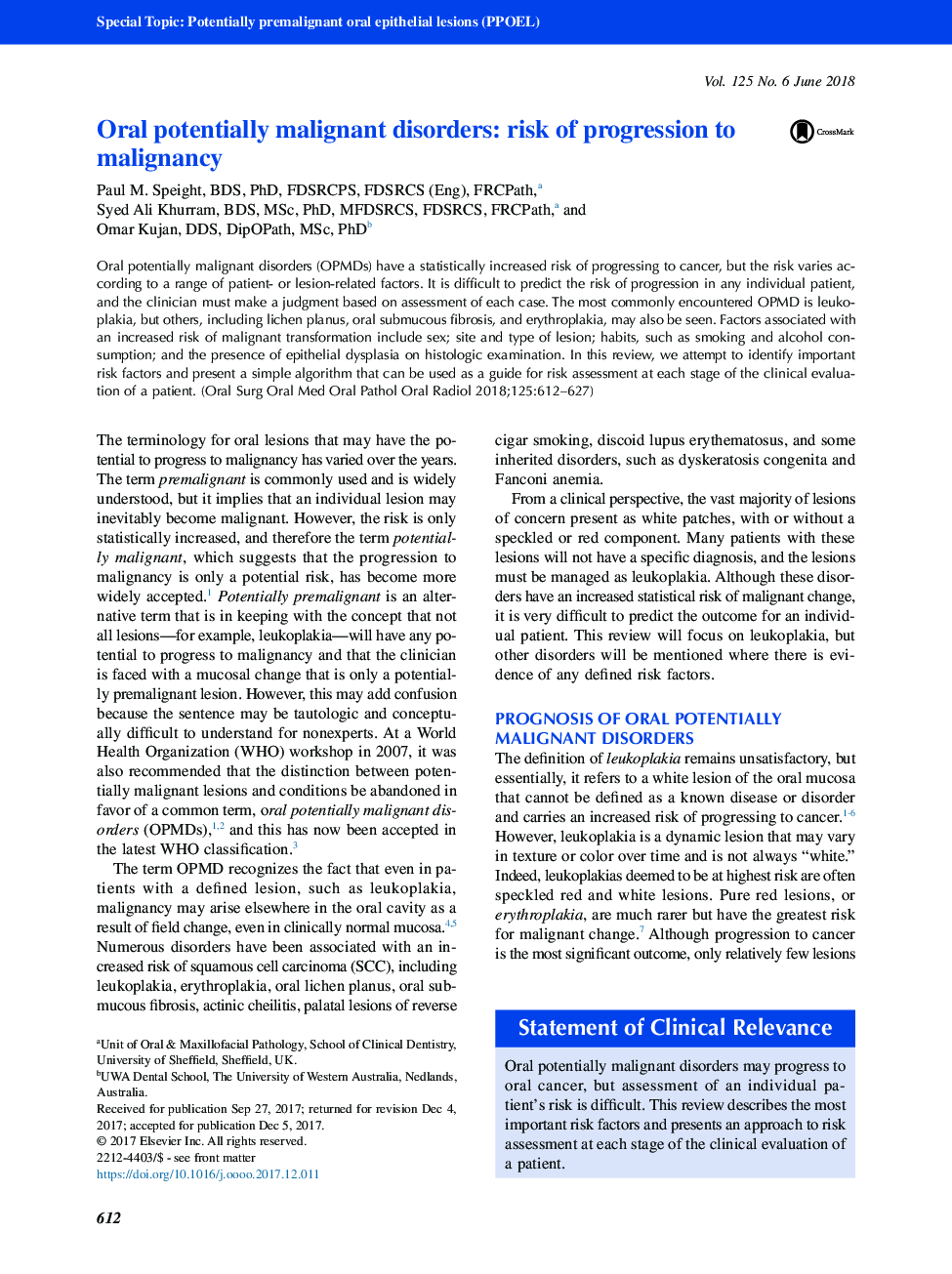| Article ID | Journal | Published Year | Pages | File Type |
|---|---|---|---|---|
| 8707632 | Oral Surgery, Oral Medicine, Oral Pathology and Oral Radiology | 2018 | 16 Pages |
Abstract
Oral potentially malignant disorders (OPMDs) have a statistically increased risk of progressing to cancer, but the risk varies according to a range of patient- or lesion-related factors. It is difficult to predict the risk of progression in any individual patient, and the clinician must make a judgment based on assessment of each case. The most commonly encountered OPMD is leukoplakia, but others, including lichen planus, oral submucous fibrosis, and erythroplakia, may also be seen. Factors associated with an increased risk of malignant transformation include sex; site and type of lesion; habits, such as smoking and alcohol consumption; and the presence of epithelial dysplasia on histologic examination. In this review, we attempt to identify important risk factors and present a simple algorithm that can be used as a guide for risk assessment at each stage of the clinical evaluation of a patient.
Related Topics
Health Sciences
Medicine and Dentistry
Dentistry, Oral Surgery and Medicine
Authors
Paul M. BDS, PhD, FDSRCPS, FDSRCS (Eng), FRCPath, Syed Ali BDS, MSc, PhD, MFDSRCS, FDSRCS, FRCPath, Omar DDS, DipOPath, MSc, PhD,
